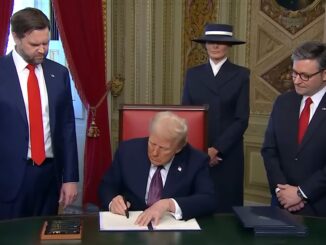
On July 8, 2025, during a cabinet meeting, President Donald Trump labeled wind and solar energy as a “blight on our country,” signaling a seismic shift in U.S. energy policy. His remarks, detailed in a Forbes article by David Blackmon, underscore a broader agenda to prioritize fossil fuels—oil, gas, and coal—while dismantling subsidies and incentives for renewable energy. This stance raises critical questions about the future of Net Zero energy policies, the U.S. energy mix, and how global trends in wind and solar investment compare to fossil fuel reliance. This article explores these issues, analyzing the implications of Trump’s policies and the broader energy landscape.
Are you from California or New York and need a tax break?
Trump’s Stance and the Rollback of Renewable Energy Support
Trump’s criticism of wind and solar centers on their perceived unreliability, high costs, environmental impact, and dependence on foreign supply chains, particularly from China. He argues that these renewable sources compromise grid stability and displace more dependable fossil fuel-based energy. His administration has moved swiftly to act on these views, with the signing of the One Big Beautiful Bill Act (OBBBA) on July 4, 2025, which phases out tax credits for wind and solar projects by 2027 and imposes stringent requirements for claiming remaining subsidies. Additionally, an executive order signed on July 7, titled “Ending Market Distorting Subsidies For Unreliable, Foreign Controlled Energy Sources,” directs the Treasury Department to enforce these phaseouts rigorously and eliminate policies favoring renewables over fossil fuels.
These actions mark a stark reversal from the Biden administration’s policies, which leveraged the Inflation Reduction Act (IRA) of 2022 to pour billions into renewable energy development. Trump’s rhetoric and policies suggest a return to an energy framework prioritizing fossil fuels, with significant implications for the U.S.’s pursuit of Net Zero carbon emissions—a goal aimed at balancing greenhouse gas emissions with removals by 2050.
Implications for Net Zero Energy Policies
Net Zero policies in the U.S. have relied heavily on expanding renewable energy to reduce dependence on fossil fuels, which account for the majority of greenhouse gas emissions. The Biden-era IRA provided tax credits and grants that spurred wind and solar growth, with renewables generating 25% of U.S. electricity in 2024, surpassing coal for the first time. However, Trump’s policies threaten to derail this progress by:
- Eliminating Financial Incentives: The OBBBA’s phaseout of clean energy tax credits by 2027 and new taxes on wind and solar projects using foreign components (particularly from China) could reduce renewable installations by up to 72% over the next decade, according to the Rhodium Group. This undermines the economic viability of new projects, slowing the transition to low-carbon energy.
- Prioritizing Fossil Fuels: Trump’s agenda, encapsulated in his “drill, baby, drill” mantra, emphasizes expanding oil, gas, and coal production. The OBBBA mandates new oil and gas lease sales in Alaska and the Gulf of Mexico and reduces royalty rates for coal mining, signaling a long-term commitment to fossil fuels. This directly contradicts Net Zero goals, which require phasing out unabated fossil fuel use.
- Grid Reliability Concerns: Critics of Trump’s approach, such as Frank Rambo of the Horizon Climate Initiative, warn that prioritizing fossil fuels over renewables could destabilize the grid, particularly as demand from AI data centers and electric vehicles surges. Renewables, paired with battery storage, have proven effective in meeting this demand quickly, whereas new gas plants face delays due to turbine shortages.
The rollback of renewable support risks stalling U.S. progress toward Net Zero, potentially increasing emissions and ceding global leadership in clean energy to countries like China and Europe, which continue to invest heavily in renewables.
U.S. Spending on Wind and Solar and the Energy Mix
Under the Biden administration, the U.S. invested heavily in wind and solar, driven by IRA tax credits and grants. In 2024, over 90% of new energy capacity came from wind, solar, and battery storage, with solar alone adding record-breaking capacity, the most from any single source in over two decades. The U.S. Energy Information Administration (EIA) reported that wind and solar accounted for 14% and 6% of U.S. electricity generation, respectively, in 2024, with fossil fuels (natural gas, coal, and oil) still dominating at 60%.
Financially, the IRA allocated approximately $370 billion over a decade for clean energy, with significant portions supporting wind and solar projects. For example, the clean electricity production and investment tax credits (sections 45Y and 48E) incentivized hundreds of thousands of jobs and boosted domestic manufacturing. However, Trump’s OBBBA rescinds unobligated IRA funds and imposes new taxes on renewable projects, particularly those reliant on Chinese components, which could halt this momentum.
The resulting energy mix reflects a transitional phase: while renewables have grown, natural gas remains the largest single source (around 40% of electricity), followed by coal (15%) and nuclear (10%). Trump’s policies are likely to entrench this fossil fuel dominance, as new lease sales and reduced regulations for oil, gas, and coal production encourage their expansion. Meanwhile, the curtailment of renewable subsidies could slow the growth of wind and solar, potentially leading to higher electricity prices as demand outpaces supply.
Global Spending on Wind, Solar, and Fossil Fuel Trends
Globally, investment in wind and solar has surged, driven by declining costs and climate commitments. According to BloombergNEF, global clean energy investment reached $1.8 trillion in 2024, with wind and solar comprising the majority. China led with over 50% of global solar installations, adding 216 gigawatts (GW) in 2024, while Europe and India also expanded capacity significantly. The International Energy Agency (IEA) reports that global wind capacity doubled and solar tripled from 2015 to 2024, with 495 GW of solar and 121 GW of wind added in 2024 alone.
This investment has reshaped global energy mixes, with renewables accounting for 30% of global electricity in 2024, up from 19% in 2015. However, fossil fuels still dominate, providing 60% of global energy consumption. The IEA notes that while coal use has declined in Europe and the U.S., global coal demand has remained stable due to growth in Asia, particularly China and India. Natural gas consumption has risen, driven by its role as a “bridge fuel,” while oil demand has plateaued but not significantly declined, largely due to transportation needs.
Despite renewable growth, fossil fuel reduction has been uneven. In Europe, coal power generation dropped by 25% from 2015 to 2024, replaced largely by wind and solar. In contrast, global oil and gas production has not seen significant reductions, with the U.S. remaining the world’s largest oil producer. Trump’s policies, which aim to “unleash” U.S. oil and gas, could further delay global fossil fuel phaseouts, as increased U.S. exports may offset reductions elsewhere.
Comparing U.S. and Global Trends
The U.S. lags behind global leaders like China and Europe in per-capita renewable deployment, despite its significant wind and solar growth under Biden. China’s dominance in solar manufacturing and installation—coupled with its control of critical supply chains—has positioned it as the global clean energy leader, a point of contention for Trump, who cites national security risks. Europe’s aggressive Net Zero policies, including carbon pricing and renewable subsidies, have driven faster coal phaseouts than in the U.S., where coal still provides 15% of electricity.
Globally, the cost-competitiveness of wind and solar (often cheaper than new fossil fuel plants) has fueled their growth, even without subsidies. In contrast, Trump’s policies bet on fossil fuels to meet rising demand, particularly from AI data centers, despite evidence that renewables with battery storage can provide cheaper, faster solutions. The U.S.’s pivot away from renewables risks isolating it from global trends, potentially increasing energy costs, and undermining economic competitiveness.
The Bottom Line
President Trump’s declaration that wind and solar are a “blight” on the U.S. heralds a challenging era for renewable energy and Net Zero ambitions. By dismantling subsidies, imposing new taxes, and prioritizing fossil fuels, his administration is reshaping the U.S. energy mix to favor oil, gas, and coal, potentially at the cost of grid reliability and higher electricity prices. While the U.S. invested heavily in wind and solar under Biden, contributing to a 25% renewable share in 2024, these gains are now at risk.
Globally, wind and solar continue to grow rapidly, driven by cost declines and climate goals, but fossil fuels remain entrenched, with uneven reductions in coal, oil, and gas. Trump’s policies may delay U.S. alignment with these trends, ceding clean energy leadership to competitors like China. As the world grapples with balancing energy security and climate goals, the U.S. faces a critical juncture: embrace the global shift toward renewables or double down on a fossil fuel-centric future, with far-reaching implications for its economy and environment. And I bet that we see a further bifurcation of markets and trading blocs. Those that follow Net Zero energy policies will face fiscal failure and economic devastation, and those that look for a balanced path forward will be in new trading blocs. The EU, UK, and Canada are on a path to deindustrialization and fiscal failure. The United States will have new trading partners, and in a few years, it will outproduce the old trading blocs.
Sources: Forbes, Reuters, The Washington Post, The New York Times, The Guardian, Pew Research Center, CNBC, DW, ABC News, BloombergNEF, IEA, and others cited inline.
Is Oil & Gas Right for Your Portfolio?
Crude Oil, LNG, Jet Fuel price quote
ENB Top News
ENB
Energy Dashboard
ENB Podcast
ENB Substack






